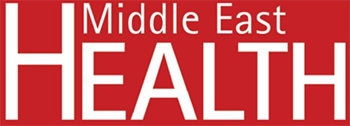
Scientists warn that H5N1’s spread across species barriers demands immediate action to address vaccine development bottlenecks and strengthen global response systems.
A team of prominent health experts has issued a stark warning about the potential pandemic threat posed by the H5N1 virus, which has already crossed species barriers to infect dairy cattle and caused sporadic human illnesses. Published in the 7 March 2025 issue of Science, the letter emphasises that although most human cases have been mild, H5N1 can cause severe disease and its ability to adapt to mammalian hosts requires urgent pandemic preparedness action.
The evolving threat
The H5N1 virus, primarily known as a bird flu pathogen, has demonstrated concerning adaptability by infecting dairy cattle and causing widespread exposure in agricultural settings. This cross-species movement significantly increases the risk of further adaptation that could potentially enable sustained human-to-human transmission.
“Given H5N1’s potential to spread, urgent action is needed to address pandemic preparedness gaps,” write the authors, led by Jesse L. Goodman from the Center on Medical Product Access, Safety and Stewardship at Georgetown University Medical Center.
The first H5N1-related human death in the United States, reported by the Louisiana Department of Health, underscores the virus’s potential severity despite most cases presenting with mild symptoms.
Vaccine development constraints
One of the primary concerns highlighted by the experts is the significant limitation in rapid influenza vaccine development and deployment using currently approved technologies, particularly protein-based vaccines.
The authors identify several bottlenecks in the vaccine development pipeline, including:
“Vaccine availability is slowed by the time required to conduct immunogenicity and efficacy assessments and lot release and potency assays,” the authors note. “Furthermore, many regulatory agencies lack the resources and capacity needed to quickly but robustly evaluate pandemic vaccines.”
To address these constraints, the letter calls for enhanced collaboration between industry, governments, and regulators to accelerate development of new vaccine technologies, particularly mRNA-based vaccines and those using novel antigens. Modernising immunogenicity assessment tools and aligning regulatory pathways would further streamline the process.
Establishing coordinated response frameworks
Beyond technological solutions, the experts emphasise that successful pandemic preparedness requires clearly defined roles, responsibilities, and financing mechanisms across global, federal, state, and local authorities.
“Immunization and communications planning must be integrated and engage affected communities, and planning must transcend political divisions,” they write, noting that these strategies should build upon lessons learned from seasonal influenza, COVID-19, and other outbreaks.
The authors call for comprehensive testing of pandemic response plans through transparent international collaboration, with countries sharing their strategies and forming global partnerships that incorporate various disease scenarios.
Three urgent priorities
The letter outlines three key initiatives that should be “urgently resourced and implemented”:
1.) Development of rapidly scalable pandemic influenza vaccines, building on models such as Operation Warp Speed, with a funded global framework to ensure equitable access.
2.) A comprehensive communication programme supported by behavioural science to address vaccine concerns and rebuild public trust in health authorities.
3.) Thorough testing of pandemic response plans with international collaboration and information sharing.
Similar initiatives should also address ongoing agricultural outbreaks, which represent the current reservoir of the virus.
Financial and implementation considerations
The authors acknowledge that effective pandemic preparedness requires substantial investment but argue that these costs pale in comparison to the potential human and economic toll of an unprepared response.
“Enhancing readiness now can save lives and reduce societal and economic disruption if H5N1 or another outbreak becomes a pandemic,” the authors conclude, emphasising that preparation must include consideration of both the pandemic’s potential impacts and the effects of mitigation strategies on healthcare systems and supply chains.
The letter represents a unified call to action from experts across multiple disciplines, arguing that the window for effective preparation may be limited as H5N1 continues to evolve and spread across species barriers.
Reference:
Goodman, J. L., Baylor, N. W., Katz, R., Gostin, L. O., Bright, R. A., Lurie, N., & Gellin, B. G. (2025). Prepare now for a potential H5N1 pandemic. Science, 387(6738), 1047. https://doi.org/10.1126/science.adw3278




